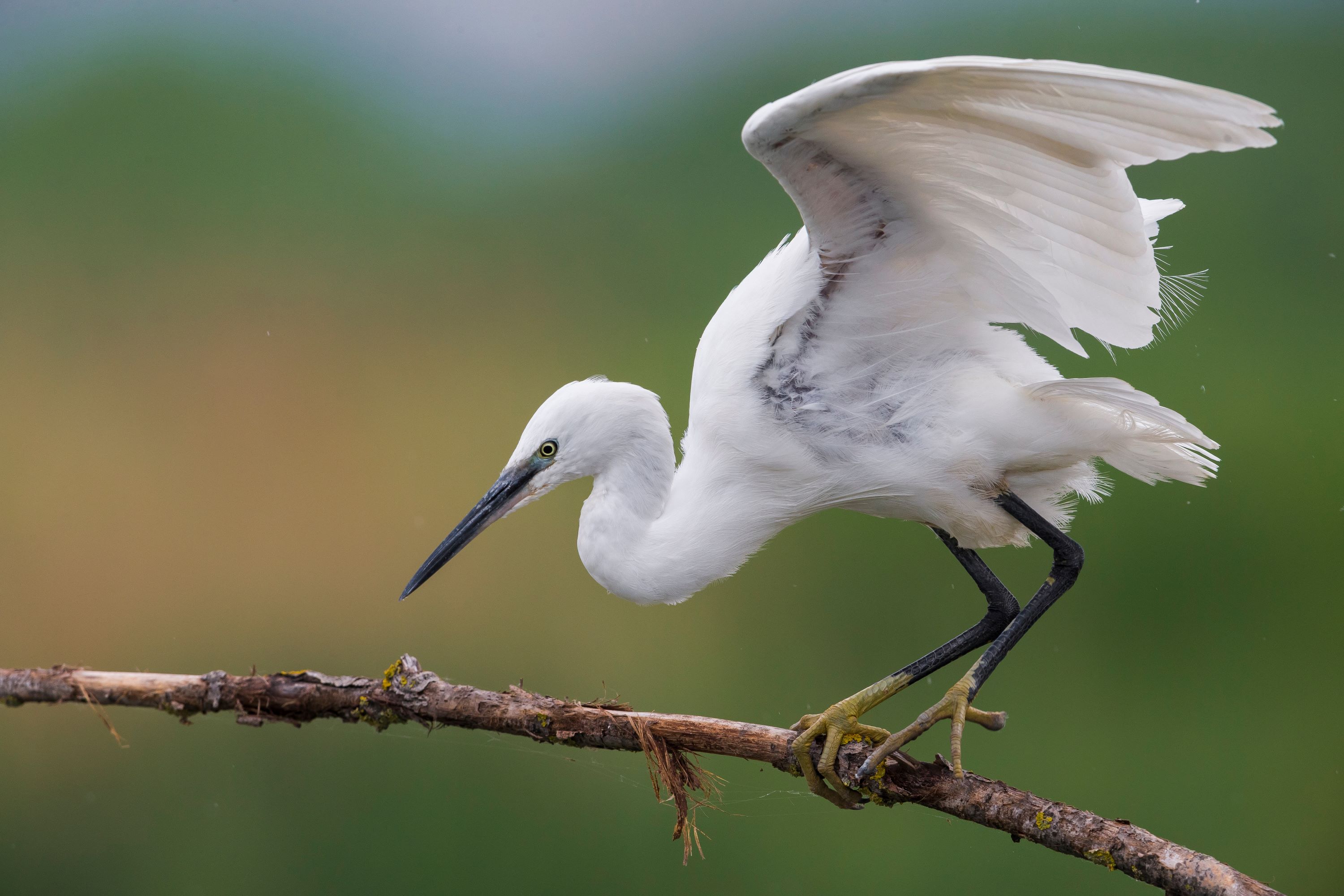
Little Egret: The Graceful Wanderer of Wetlands
Introduction to the Little Egret
The Little Egret, Egretta garzetta, is a small, elegant bird that belongs to the heron family, Ardeidae. Recognized for its striking white plumage and delicate features, the Little Egret is a widely distributed species found in various parts of the world.
Physical Description
Standing approximately 55-65 cm tall, the Little Egret is characterized by its pure white plumage. During the breeding season, it displays elegant plumes on the back of its neck, and its head is adorned with two long, slender feathers. The bird’s slender black bill, long black legs, and bright yellow feet add to its distinctive appearance.
Habitat and Distribution
The Little Egret inhabits a range of wetland habitats, including marshes, riverbanks, lakesides, and estuaries. Its distribution spans across parts of Europe, Asia, Africa, and Australia. The species has also expanded its range to other regions, including the Caribbean and parts of North America.
Behavior and Lifestyle
This egret is known for its agility and is often seen actively foraging in shallow waters. It can be solitary or social, depending on the availability of food and habitat conditions. The bird is also known for its habit of following larger animals to feed on disturbed prey.
Feeding Habits
The diet of the Little Egret primarily consists of fish, but it also feeds on a variety of aquatic animals, including amphibians, crustaceans, and insects. It hunts by walking through shallow water or by standing still, waiting to strike its prey with rapid movements.
Breeding and Nesting Habits
The Little Egret typically breeds in colonies, often with other species of herons and egrets. Nests are usually built in trees or shrubs near water bodies. The nests are constructed using twigs and lined with softer materials.
Egg Laying and Incubation
The female lays 3 to 5 pale blue-green eggs. Both parents participate in incubating the eggs, which hatch after about 21 to 25 days. The high nests help protect the young from potential predators.
Chick Rearing and Parental Care
Chicks are born altricial and rely on their parents for food and protection. Both parents feed the chicks, which fledge at about 6 to 7 weeks of age but may remain dependent on their parents for a short while after leaving the nest.
Vocalizations and Communication
While generally quiet, the Little Egret can produce a range of sounds, especially during the breeding season. These include guttural croaks and soft calls used for communication within the colony and with its mate.
Conservation Status
The Little Egret is currently listed as Least Concern by the IUCN. However, it faces threats from habitat loss, pollution, and changes in wetland ecosystems in some parts of its range.
Similar Species and Taxonomy
Part of the order Pelecaniformes, the Little Egret shares many characteristics with other species in the genus Egretta, such as the Snowy Egret and the Western Reef-Heron. It is often distinguished by its smaller size and the combination of its black bill and yellow feet.
The Little Egret in Utah
The Little Egret is not a common species in Utah or North America, with its primary range being in Europe, Asia, and Africa. However, there have been occasional sightings in North America. In Utah, birdwatchers are more likely to observe native heron species or closely related egrets.
Conclusion
The Little Egret, Egretta garzetta, is a beautiful and graceful bird that enhances the biodiversity of wetland ecosystems around the world. Its presence in diverse habitats underscores the ecological importance of maintaining healthy wetlands and waterways. Observing the Little Egret in its natural environment offers a window into the vibrant life of these crucial ecosystems, highlighting the need for ongoing conservation efforts.